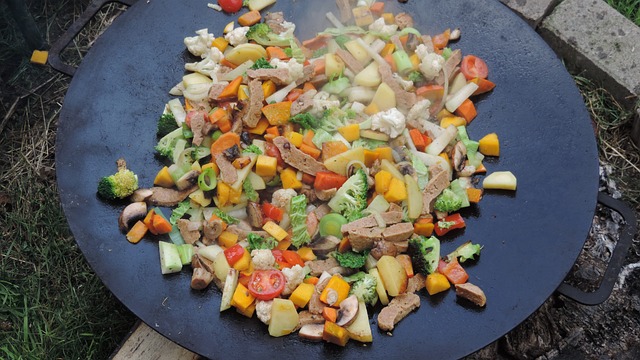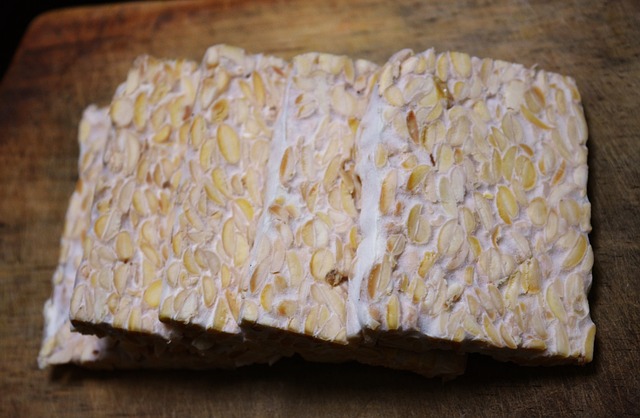
There’s a culinary revolution happening all around us. People are increasingly embracing plant-based proteins as a versatile and nutritious ingredient that adds depth and flavor to their meals. With a growing interest in sustainable and healthy eating, plant-based proteins have emerged as a popular choice for both vegans and non-vegans alike. These protein-packed alternatives to animal-based proteins provide a bounty of benefits, not only for our health but for the environment as well.
From lentils and chickpeas to tofu and tempeh, plant-based proteins offer an array of options that can transform any dish into a delicious and nourishing masterpiece. In this article, we will explore the world of plant-based proteins and discover how they can elevate your culinary creations to new heights. So, whether you’re a seasoned plant-based enthusiast or simply curious about incorporating more plant-based ingredients into your meals, read on to unlock the secrets of this remarkable cooking ingredient.
Types of Plant-Based Proteins
Plant-based proteins offer a diverse array of options to fuel your meals with nourishing goodness. Let’s explore some common categories of plant-based proteins.
Legumes
Legumes are protein-rich plant foods that include a variety of options:
- Lentils: Lentils come in various colors and sizes, making them suitable for soups, stews, and salads.
- Chickpeas: Chickpeas are famous for hummus but can also be roasted for a crunchy snack or used in curries and salads.
- Black Beans: These are staples in many Latin American dishes, like black bean soup and burritos.
Nuts and Seeds
Nuts and seeds provide not only protein but also healthy fats and fiber:
- Almonds: Almonds are versatile and can be turned into almond butter, added to salads, or eaten as a snack.
- Chia Seeds: Chia seeds are packed with omega-3 fatty acids and can be used in puddings, smoothies, and baked goods.
Tofu and Tempeh
Tofu and tempeh are soy-based proteins that can be transformed into various dishes:
- Tofu: Tofu is known for its versatility; it can be used in stir-fries, scrambles, or blended into smoothies.
- Tempeh: Tempeh is a fermented soy product with a nutty flavor, perfect for grilling, sautéing, or crumbling into dishes.
Seitan
Seitan, also known as wheat meat, is high in protein and has a meaty texture. It’s often used in vegan and vegetarian dishes, such as stir-fries and sandwiches.

Plant-Based Meat Alternatives
Plant-based meat alternatives are designed to mimic the taste and texture of animal meat:
- Beyond Meat: Beyond Meat offers burgers, sausages, and more for grilling or using in a variety of recipes.
- Impossible Foods: Impossible Foods is known for its plant-based ground meat, perfect for tacos, burgers, and chili.
Understanding these different types of plant-based proteins will open up a world of culinary possibilities, allowing you to create delicious and protein-packed dishes that suit your taste and dietary preferences.
Benefits of Cooking with Plant-Based Proteins
Plant-based proteins offer a range of advantages that make them a smart choice for your meals. Here are the key benefits:
Nutritional Value
Plant-based proteins are packed with essential nutrients that contribute to your overall health. Plant-based proteins provide a source of protein, which is crucial for muscle maintenance and overall body function.

Many plant-based proteins are rich in dietary fiber, aiding in digestion and promoting a feeling of fullness. Plant-based proteins often contain essential vitamins and minerals, such as iron, calcium, and folate, which are essential for good health.
Versatility in Recipes
Plant-based proteins are incredibly versatile and can be used in a wide range of recipes. They can replace animal proteins in almost any dish, from burgers to curries, making them suitable for various diets. Plant-based proteins, like tofu or legumes, can be blended into creamy soups, smoothies, and sauces. Different plant-based proteins offer various textures, allowing you to experiment with different mouthfeels in your dishes.
Environmental Impact
Choosing plant-based proteins can have a positive impact on the environment. Plant-based proteins generally have a lower carbon footprint than animal proteins, which is essential for combating climate change. Producing plant-based proteins typically requires less water compared to animal agriculture, conserving this precious resource. A plant-based diet can help reduce deforestation and habitat loss, preserving the planet’s biodiversity.
By incorporating plant-based proteins into your diet, you not only enjoy their nutritional benefits but also contribute to more sustainable and environmentally friendly food choices.
Cooking Methods for Plant-Based Proteins
Cooking with plant-based proteins offers a world of culinary possibilities. Here, we’ll explore various cooking methods to help you make the most of these nutritious ingredients.
Grilling and Roasting
Grilling and roasting enhance the flavors and textures of plant-based proteins:
- Grilling: Create mouthwatering veggie kebabs or grill plant-based burgers for that smoky, charred taste.
- Roasting: Oven roasting is perfect for bringing out the natural sweetness in vegetables and plant-based protein sources like tofu or tempeh.

Sautéing and Stir-Frying
Sautéing and stir-frying allow you to cook plant-based proteins quickly, preserving their natural colors and textures:
- Sautéing: Use a hot pan and a small amount of oil to quickly cook vegetables and proteins, like mushrooms or seitan.
- Stir-Frying: High heat and constant stirring are key in stir-frying, creating crispy and vibrant dishes with tofu, tempeh, or veggies.
Baking and Broiling
Baking and broiling can yield tender, evenly cooked plant-based dishes:
- Baking: Bake casseroles, lasagnas, or stuffed peppers with plant-based proteins, allowing flavors to meld.
- Broiling: Broiling is great for achieving a crispy top on dishes like cheesy tofu or plant-based gratins.
Marinating and Seasoning
Marinating and seasoning are crucial for infusing plant-based proteins with flavor:
- Marinating: Soaking plant-based proteins in flavorful liquids, such as teriyaki sauce or marinades, adds depth and character to your dishes.
- Seasoning: Don’t underestimate the power of herbs and spices to elevate the taste of your plant-based proteins.
Blending and Processing
Blending and processing allow you to create creamy textures or unique plant-based protein bases:
- Blending: Create creamy soups or smoothie bowls by blending ingredients like beans, cashews, or tofu.
- Processing: Make homemade veggie burgers, veggie nuggets, or spreads by processing plant-based ingredients with breadcrumbs and spices.
By mastering these cooking methods, you can explore the vast world of plant-based proteins, creating delicious and nutritious dishes that suit your tastes and dietary preferences.
Handling and Storage
Proper handling and storage of plant-based proteins are essential to keep them fresh and safe for consumption. Let’s delve into the guidelines for handling and storing these ingredients.

1. Proper Storage Guidelines: Keeping Ingredients Fresh
Plant-based proteins, just like any other food, require proper storage to maintain their freshness. Most plant-based proteins, like tofu, tempeh, and seitan, should be stored in the refrigerator at temperatures below 40°F (4°C). Store leftovers or opened packages in airtight containers to prevent odors from spreading and to maintain freshness. If you won’t use plant-based proteins within a day or two, consider freezing them. Proper packaging is crucial to prevent freezer burn. Use freezer-safe bags or containers.
2. Preventing Cross-Contamination: Safe Handling Practices
To ensure safety, it’s essential to prevent cross-contamination, where plant-based proteins come into contact with other foods. Store plant-based proteins away from other foods, particularly those that won’t be cooked, to prevent cross-contamination. After handling plant-based proteins, thoroughly wash your hands, utensils, and cutting boards with hot, soapy water to avoid transferring any potential pathogens to other surfaces or foods.
3. Freezing and Reheating: Extended Freshness
Freezing plant-based proteins is an excellent way to extend their freshness. For best results, divide plant-based proteins into portion sizes, package them securely in airtight containers or bags, and label with the date. Be mindful of not overfilling containers, as plant-based proteins can expand when frozen. When reheating plant-based proteins, follow safe reheating guidelines to ensure they are heated thoroughly to kill any potential bacteria.
By adhering to these handling and storage practices, you can prolong the shelf life of plant-based proteins, minimize waste, and enjoy fresh and safe ingredients for your plant-based meals.
Incorporating Plant-Based Proteins into Your Diet
Adding plant-based proteins to your diet is a smart choice for both your health and the environment. Here’s how to seamlessly integrate them into your meals:
Meal Planning Tips
When planning your meals, include a variety of plant-based proteins in your diet. Mix it up with legumes, nuts, seeds, and plant-based meat alternatives. Ensure your meals contain a balanced mix of proteins, carbohydrates, and vegetables for a well-rounded diet. Explore new recipes that feature plant-based proteins. There are countless online resources and cookbooks to inspire you.
Balancing Nutritional Needs
Balancing your nutritional needs is vital when shifting to a plant-based diet. Ensure you’re consuming enough plant-based proteins to meet your daily protein requirements. Legumes, tofu, and tempeh are great choices. Some plant-based proteins, like beans and fortified foods, are rich in iron. Consider a B12 supplement to meet your vitamin B12 needs, which may be lacking in plant-based diets. Fortified plant-based milk and leafy greens like kale can be excellent sources of calcium.

Transitioning to a Plant-Based Diet
Transitioning to a plant-based diet doesn’t have to happen overnight. You can start by incorporating one or two plant-based meals into your week and gradually increase the frequency. Educate yourself about plant-based nutrition and explore different cooking techniques to make the transition enjoyable. Experiment with plant-based meat alternatives for a familiar taste and texture.
By following these guidelines, you can make a smooth transition to a diet enriched with plant-based proteins, reaping the benefits of improved health and contributing to a more sustainable food system.
